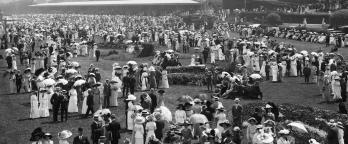Last updated:
This topic relates to records that identify Victorians who are eligible to vote in elections for the Colonial/State Government of Victoria (legislative assembly) or in Victorian council elections (municipal).
Note: only a small number of these records are held in our collection.
What do I need to know before I start?
- type of voter roll (e.g municipal)
- surname of the person
- date range of the election
The following will also assist your search
- did they own property?
- were they Aboriginal?
Two broad categories of electoral roll records were created
All men over 21 were eligible to vote for Legislative Assembly candidates from 1857 (Aboriginal men were not denied the right to vote; however, few Aboriginals were aware of their rights and were not encouraged to enrol). Women over 21 were eligible to vote from 1908. Only those who met land ownership requirements could vote in the state election (Legislative Council) until 1950.
Voters’ rolls, also known at varying times as ratepayers rolls or lists, burgess rolls or lists and citizens rolls or lists, were created for municipal elections. Only ratepayers drawn from rate books were eligible to vote until the early 1980s when eligibility was expanded to include everyone on the State electoral roll.
View online or at the Reading Room?
Look for the icons below to identify if records are viewable online (mouse over globe) or need to be ordered online and then viewed at our Reading Rooms (open book):
Look for these icons to:

View online

Visit Us
Material in the Public Record Office Victoria archival collection contains words and descriptions that reflect attitudes and government policies at different times which may be insensitive and upsetting
Aboriginal and Torres Strait Islander Peoples should be aware the collection and website may contain images, voices and names of deceased persons.
PROV provides advice to researchers wishing to access, publish or re-use records about Aboriginal Peoples



